Key takeaways:
- A sedentary lifestyle can lead to both physical and mental health issues, fostering feelings of anxiety and loneliness.
- The pandemic intensified these effects, prompting a need for movement to reclaim well-being.
- Incorporating small, enjoyable activities like dance parties or turning chores into mini workouts can effectively increase physical activity.
- Building a support system and setting achievable goals are crucial for maintaining motivation and overcoming setbacks in the journey toward a more active lifestyle.
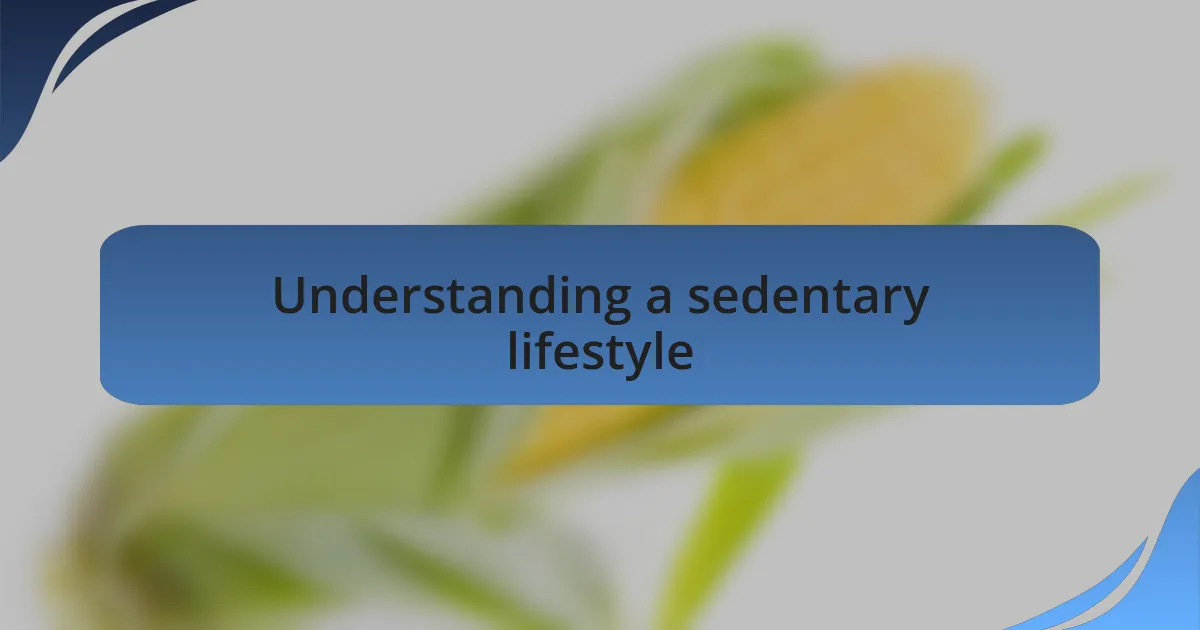
Understanding a sedentary lifestyle
A sedentary lifestyle typically involves prolonged periods of inactivity, often spent sitting or lying down. I remember days where I’d sit for hours, engrossed in a screen, feeling time slip away without any activity. This habitual inaction doesn’t just sap energy; it can become an emotional crutch for avoiding the stress of life’s demands.
What surprised me was how insidiously this lifestyle can sneak into various aspects of daily life. I often found myself justifying my lack of movement by convincing myself that work was more important than taking a quick walk. Have you ever caught yourself in a similar trap? It’s not just about the physical aspect; it gets into your mindset, making you feel less motivated and at times, even a bit trapped.
Beyond the obvious physical consequences, a sedentary lifestyle can affect mental well-being too. I felt a wave of anxiety wash over me when I realized how little I was moving. It struck me like a wake-up call: if I didn’t change, I’d miss out on the joy that comes with being active and connected to my surroundings. Understanding this pattern was the first step in my journey toward change.
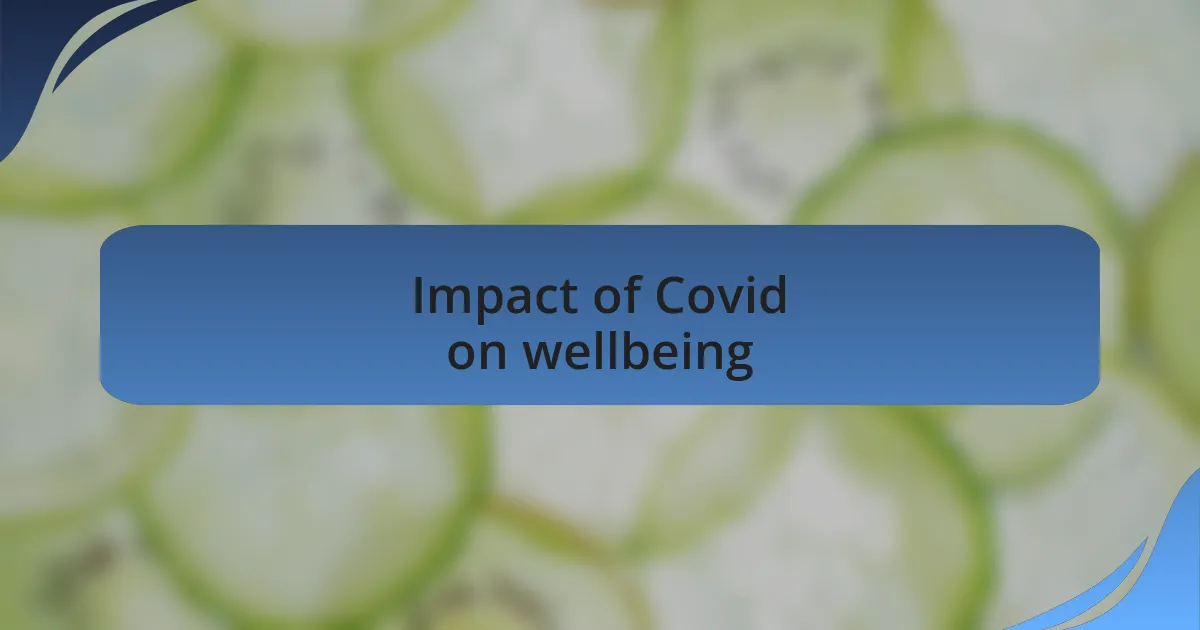
Impact of Covid on wellbeing
The pandemic fundamentally shifted our lives, placing many of us in a position where staying indoors became the norm. I can vividly recall feeling the pressure mount as days turned into weeks, and weeks into months of minimal movement. The emotional toll was significant; I often felt unmotivated and lethargic, as though the four walls of my home were closing in on me.
Social isolation heightened feelings of anxiety and loneliness, painting a grim picture of overall wellbeing. I found myself scrolling through social media, comparing my experiences to others who seemed more vibrant and active. It sparked a question in my mind: how can we reclaim our wellbeing in such challenging circumstances? This realization pushed me to reconsider my habits and the importance of movement, no matter how small.
The mental strain of prolonged inactivity during this time was palpable. I remember feeling overwhelmed by a sense of disconnection—not just from the outside world, but from my own body. It became clear that without addressing these feelings, I risked sinking further into a cycle of inactivity and despair. How could I shift my mindset to embrace movement again? This internal dialogue became essential in my journey to reclaim both my physical health and emotional stability.
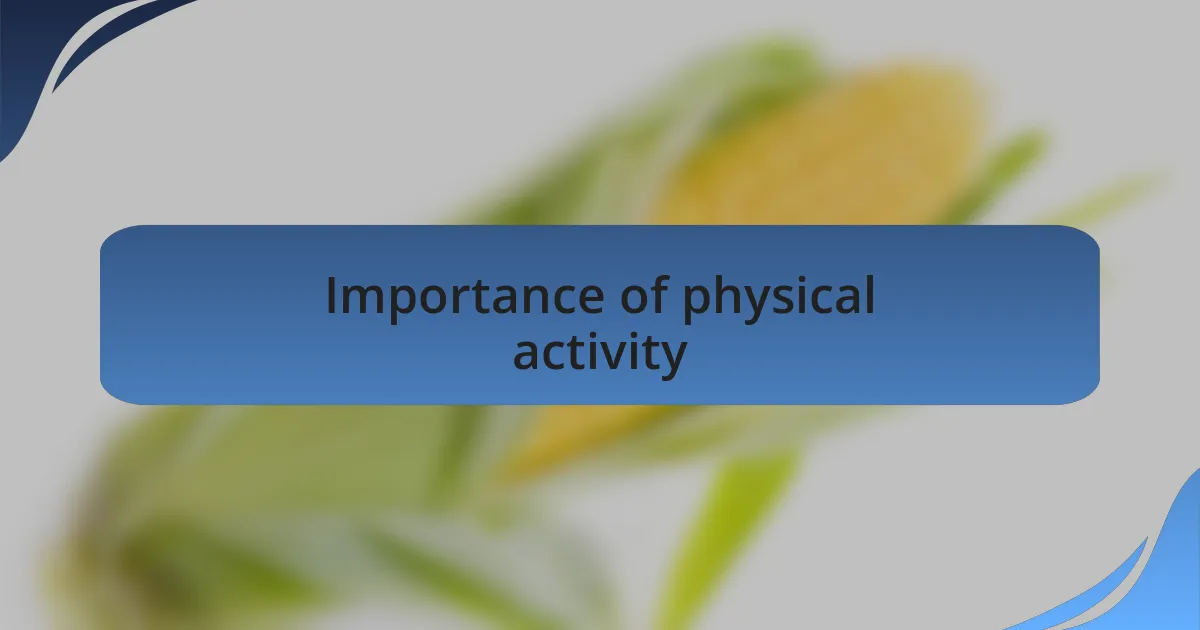
Importance of physical activity
Physical activity is crucial for both physical and mental health, especially during times of stress. I remember the first time I decided to step outside for a brisk walk; the fresh air revitalized me. It was as if I had tapped into a long-lost source of energy. I realized that even a short amount of movement could break the cycle of lethargy I had found myself in.
Engaging in physical activity fosters a sense of accomplishment and boosts mood. One afternoon, I tried a beginner’s yoga session at home. As I moved through the poses, I noticed my mind gradually quieting, like a storm giving way to a gentle breeze. How liberating it felt to reconnect with my body! This made me appreciate the simple joy of movement—even just stretching or dancing in my living room made a substantial difference.
Furthermore, physical activity helps combat the feelings of anxiety and loneliness that often accompany a sedentary lifestyle. I discovered that every little bit counts, whether it’s a short workout or a few playful minutes with my kids. Have you ever noticed how a quick stroll can lift your spirits? I certainly have, and it became an essential part of my routine as I navigated through the challenges posed by the pandemic.
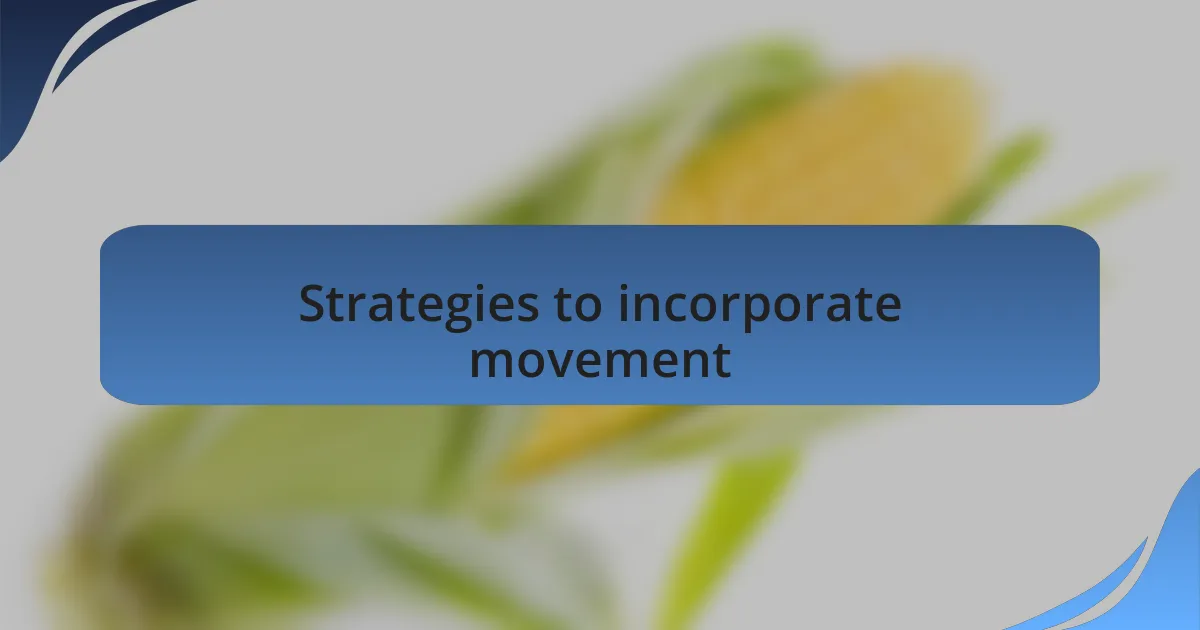
Strategies to incorporate movement
Finding ways to incorporate movement into my daily routine was a game-changer for my health. I started setting reminders to stand up and stretch or take a quick walk around my house every hour. At first, it felt like an interruption, but soon enough, I realized those small breaks gave me a refreshing boost in energy and focus.
I also discovered that combining movement with something I loved made it easier to stick to. For instance, I began scheduling virtual dance parties with friends every weekend. Not only did we get our bodies moving, but it also fueled a sense of connection and joy during a time when isolation felt overwhelming. Have you ever felt the exhilaration of losing yourself in music? It’s an incredible way to transform exercise into an exciting experience.
Another simple yet effective strategy was integrating movement into daily chores. I began to crank up the music and turn cleaning into a mini workout. I remember dancing with the broom, and surprisingly, it made tidying up feel less daunting and more fun. These spontaneous moments of movement not only kept my body active but lightened my mood, turning what once felt like a chore into a delightful ritual.
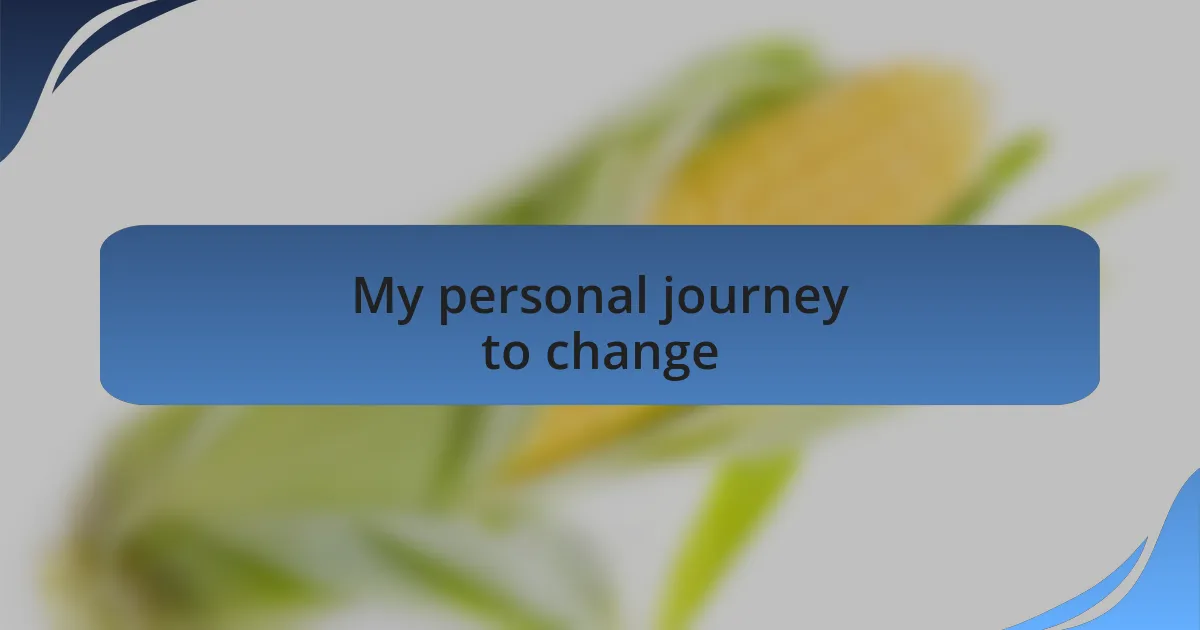
My personal journey to change
Shifting away from a sedentary lifestyle felt daunting at first. I remember sitting on my couch, scrolling through social media, realizing that I was barely moving all day. One day, it hit me: if I wanted to feel better, I needed to step outside my comfort zone. So, I started with just five minutes of walking each day. Surprisingly, those few minutes evolved into longer walks as I began to appreciate the fresh air and change of scenery.
As I dove deeper into this journey, I embraced the idea of setting small, achievable goals. I recall celebrating my first milestone—two weeks of consistent movement. It might seem trivial to some, but to me, it felt monumental. Each step forward sparked a sense of accomplishment, reminding me that progress isn’t always about grand gestures; sometimes it’s about simple, consistent choices. Have you ever felt that surge of pride over a small win? It’s those victories that laid the foundation for more significant changes down the line.
In discussing my experience with friends, I noticed we shared similar struggles and dreams for better health. This connection made me realize I wasn’t alone. We began to motivate each other and share our goals, which transformed my solitary efforts into a community experience. The realization struck me—wasn’t it easier to change when you had a support system? It became clear that this journey wasn’t just about physical movement; it was about building relationships and finding joy in each step I took.
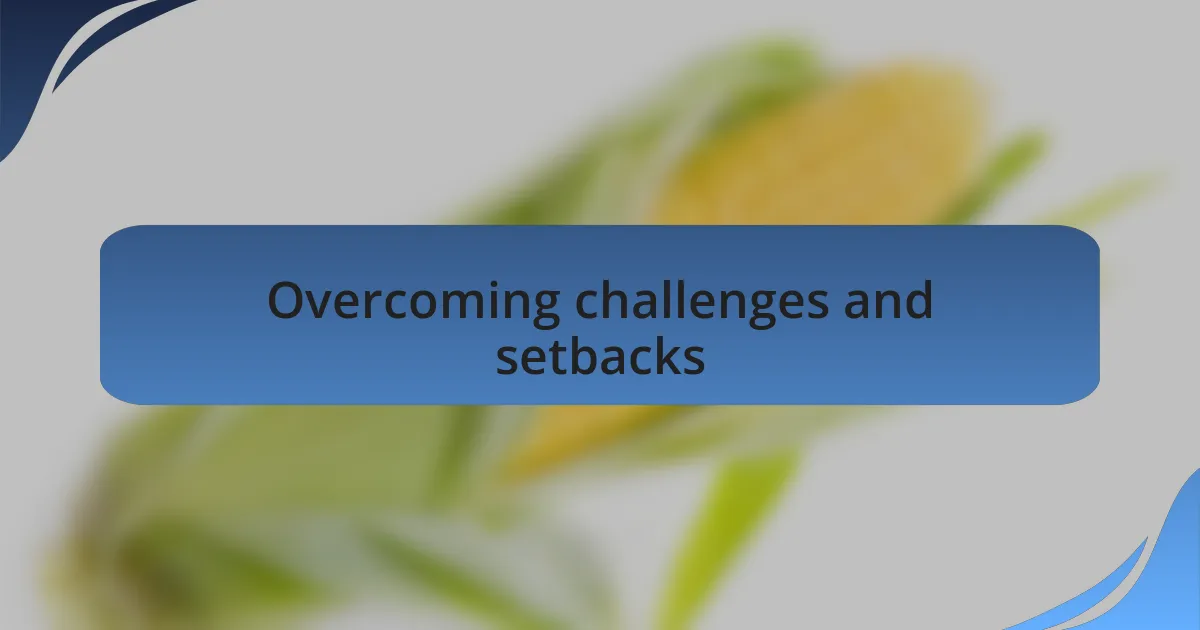
Overcoming challenges and setbacks
Facing challenges on this journey was inevitable. I remember a week where motivation waned, and my walks felt more like a chore than a choice. One particularly rainy day found me curled up with a book, justifying to myself that rest was deserved. But as I reflected on my goals, I realized that setbacks were part of growth—not failures. Wouldn’t it be easier to view those tough moments as opportunities for resilience?
Another hurdle arose when distractions took over my routine. My phone buzzed with notifications, tempting me back into sedentary habits. I decided to set specific ‘distraction-free’ zones during my movement time, tucking away my device to focus entirely on being present. Surprisingly, this little alteration created space for deeper reflection, making each step feel more intentional. Have you ever noticed how a simple change in focus can transform your experience?
Embracing the unpredictability of this journey taught me the importance of flexibility. On days when work piled up and drained my energy, I learned to adapt—sometimes a brisk walk around my living room sufficed. I started celebrating the moments I chose movement, even in the smallest ways. It’s an empowering realization, isn’t it? This journey isn’t just about overcoming challenges; it’s about finding joy in adapting to them.